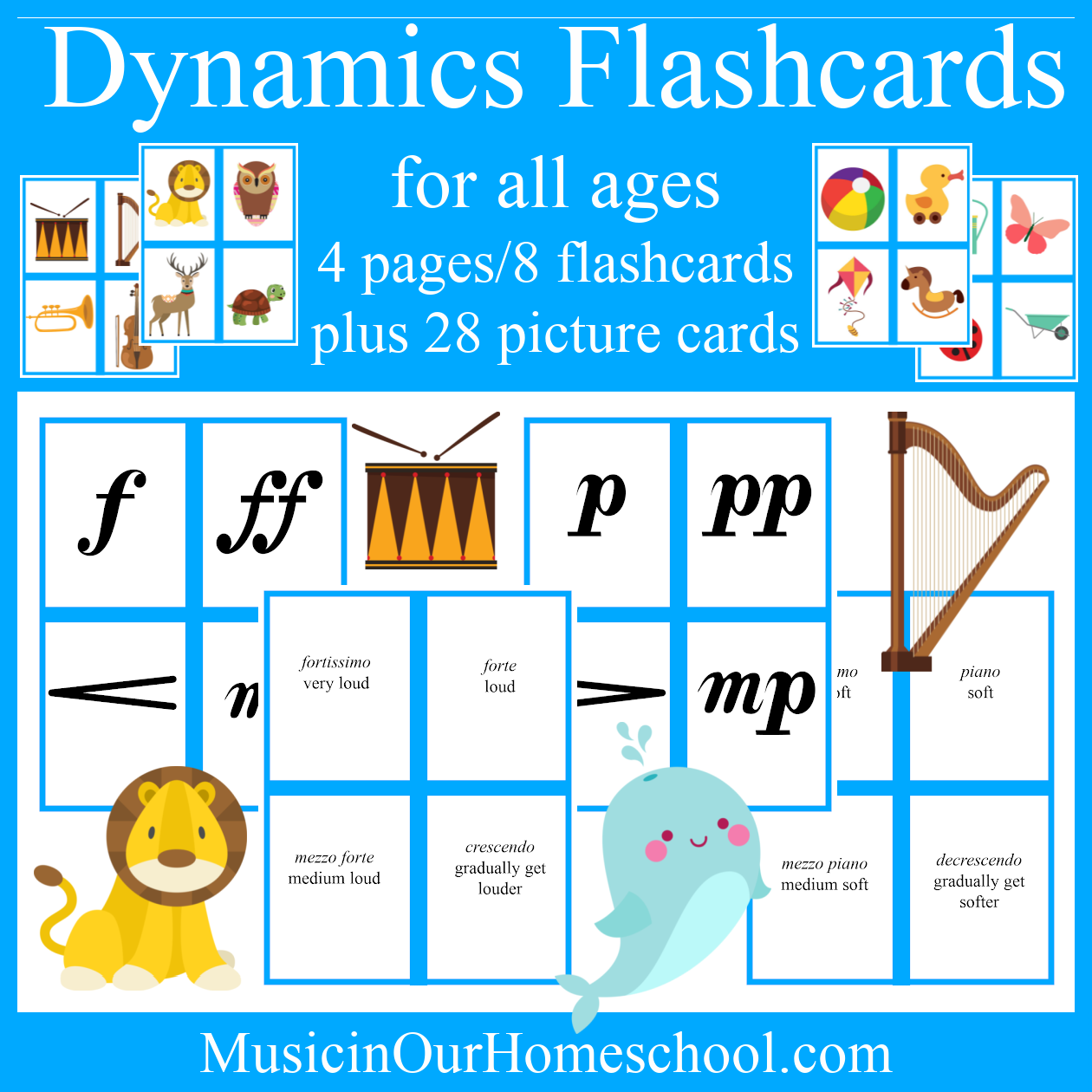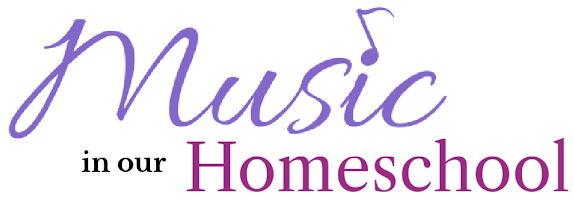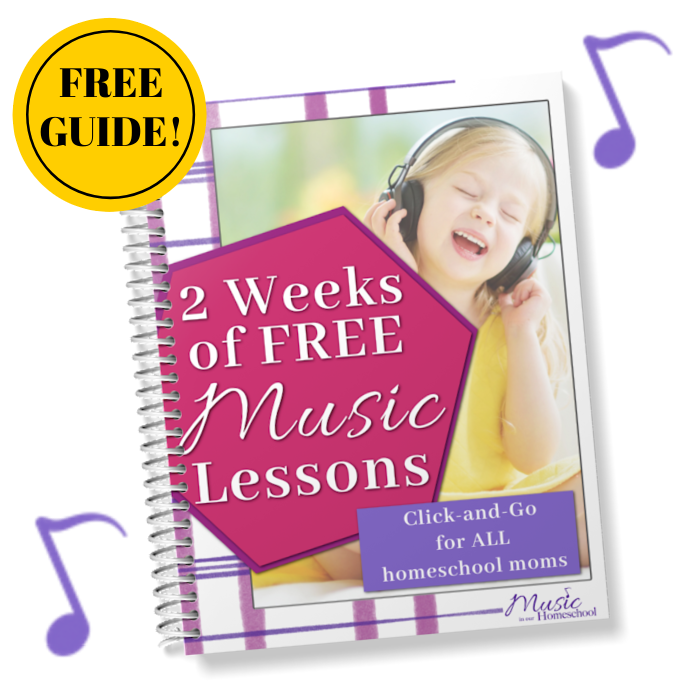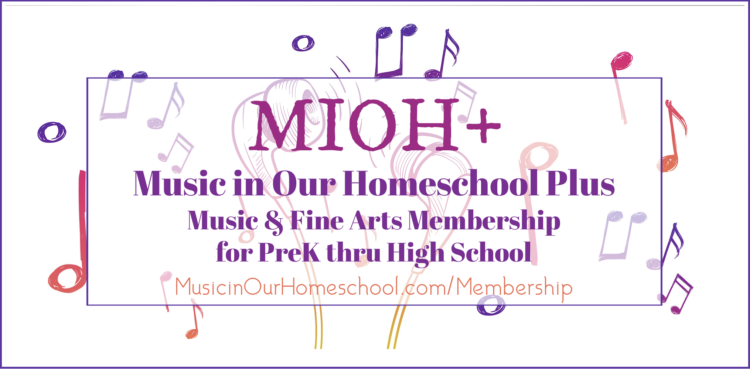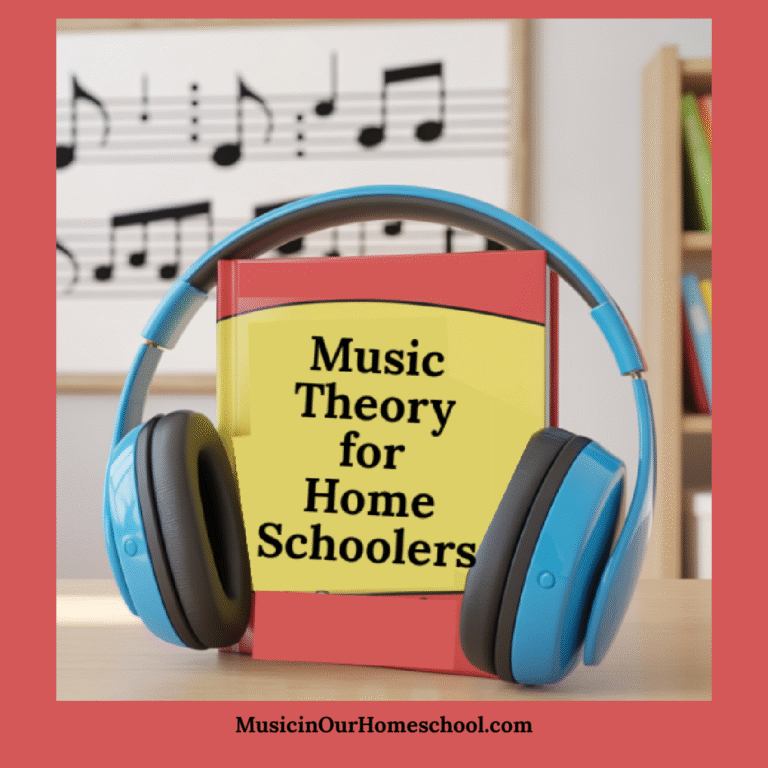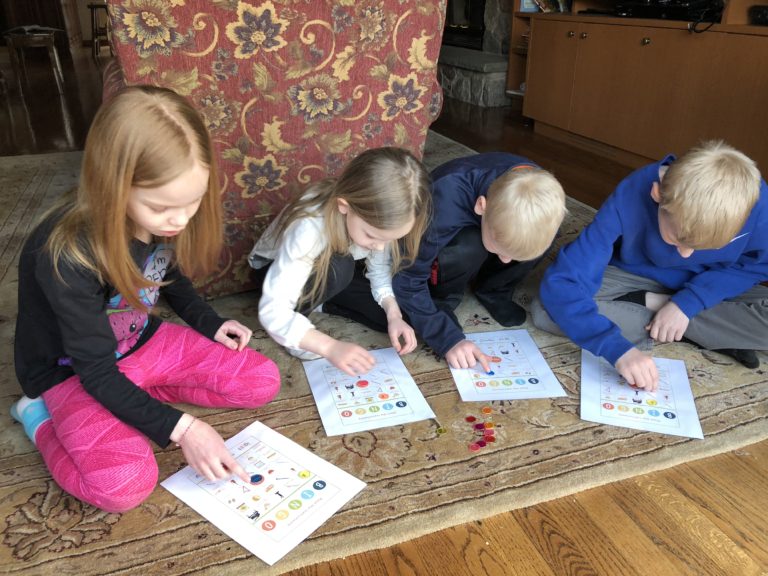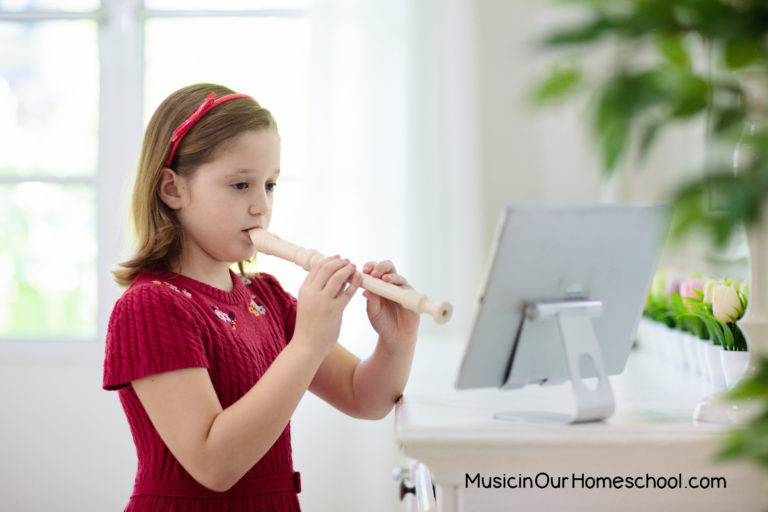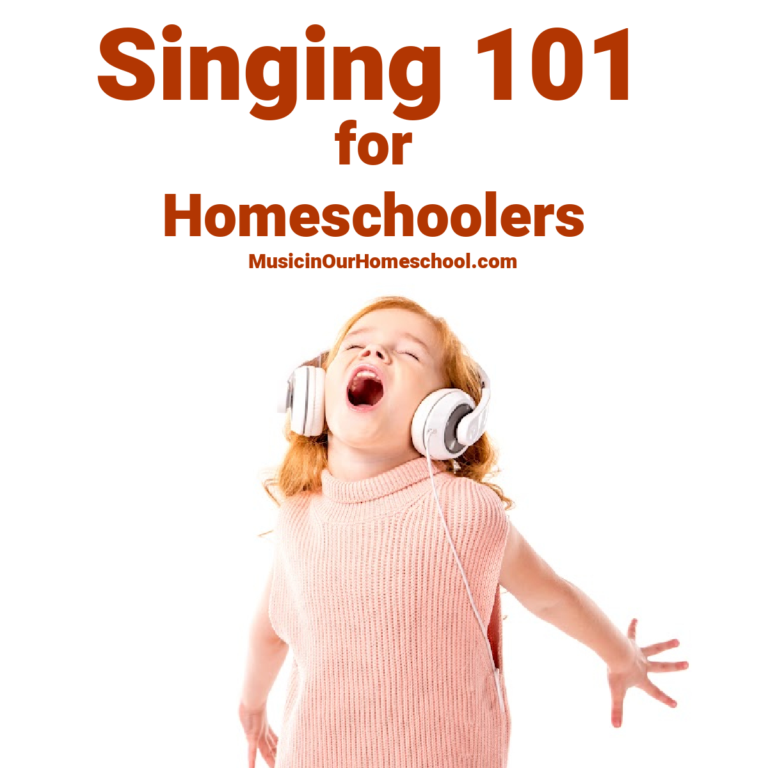Music Theory Tip: What are Dynamics & Handy Tips for Teaching Dynamics to Kids (E5)
Today I'm sharing Tips for Teaching Dynamics in your Homeschool! Dynamics are an important part of music, but they can be tricky to teach to young students. Homeschool moms can use flashcards and picture cards to help their children understand and master dynamics in a fun and engaging way.
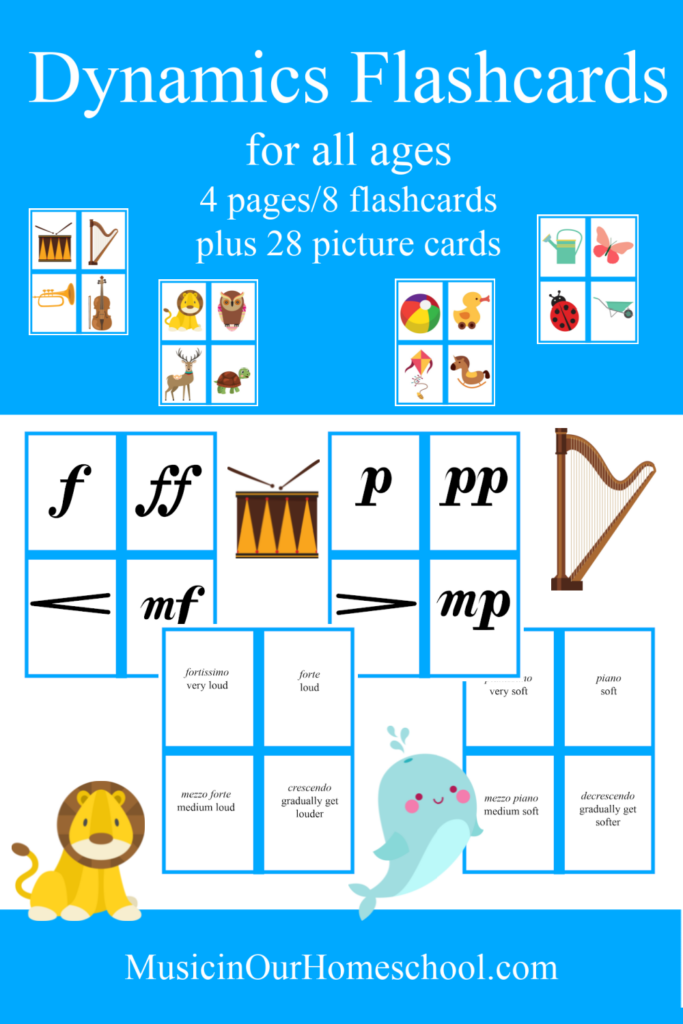
What are Dynamics?
Dynamics are the volume variations in music. They can be used to create different moods and emotions, from soft and gentle to loud and boisterous. The most common dynamics are:
- Forte (f) – loud
- Fortissimo (ff) – very loud
- Fortississimo (fff) – very, very loud
- Mezzo forte (mf) – moderately loud
- Mezzo piano (mp) – moderately soft
- Piano (p) – soft
- Pianissimo (pp) – very soft
- Pianississimo (ppp) – very, very soft
- Crescendo (cresc.) – gradually getting louder
- Decrescendo (decresc.) or Diminuendo (dim.) – gradually getting softer
Why Teach Dynamics?
Teaching dynamics is important for a number of reasons. First, it helps students to understand and appreciate the different moods and emotions that can be created through music. Second, it helps them to develop their musicality and expressiveness. Third, it can improve their sight-reading skills.
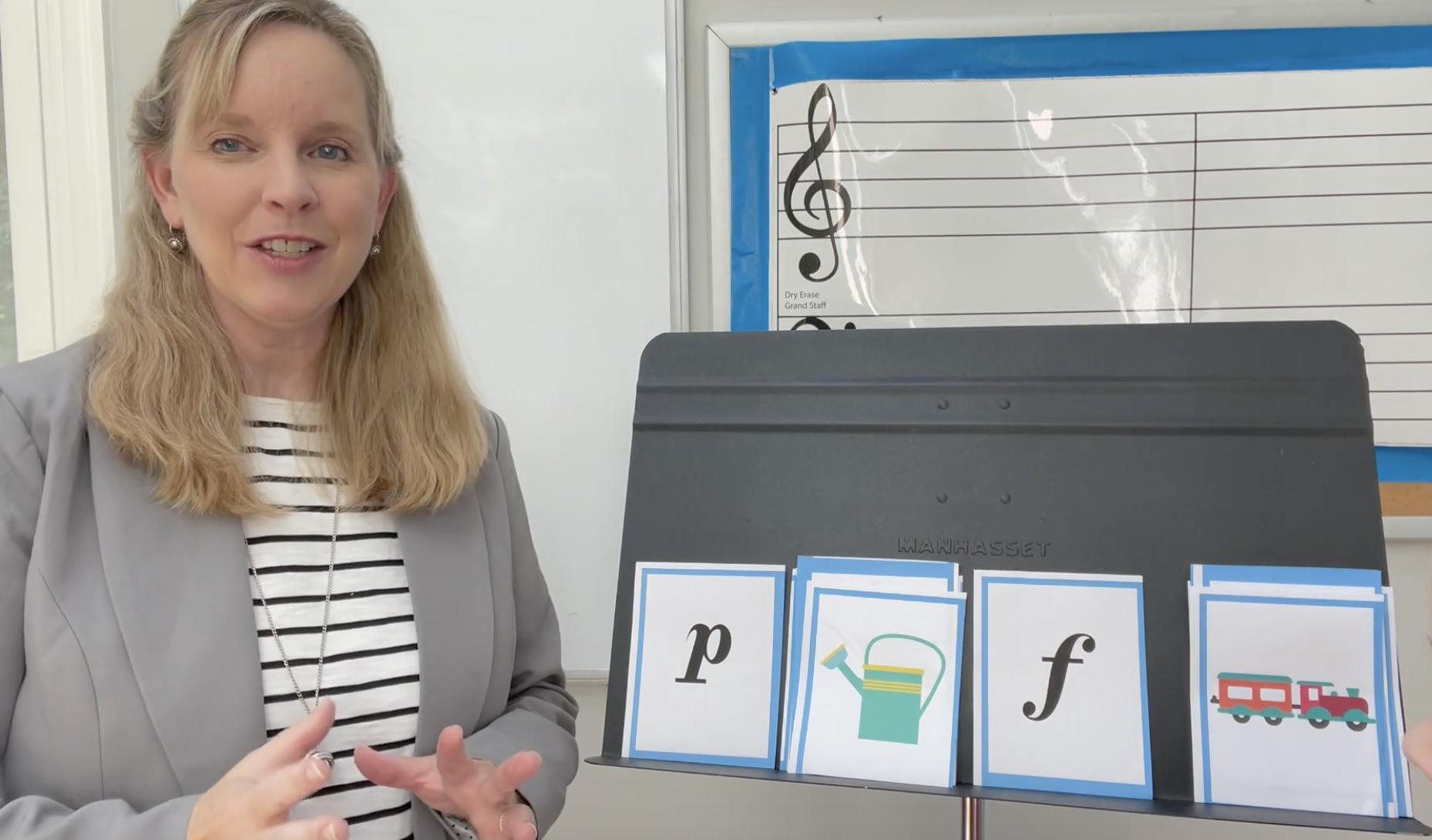
Tips for Teaching Dynamics with Flashcards and Picture Cards
There are many different ways to use flashcards and picture cards to teach dynamics. Here are a few ideas:
- Flashcards: Show the student a flashcard with a dynamic symbol on it and have them sing or play a note or phrase at that dynamic level. For example, if you show them the flashcard with the letter “f” on it, have them sing or play a note or phrase loudly.
- Picture cards: Show the student a picture card and have them identify the dynamic level that matches the picture. For example, if you show them a picture of a lion roaring, they might say “forte” or “fortissimo.”
- Memory games: Turn the flashcards or picture cards over and play a game of memory. When a student turns over two cards that match, they have to identify the dynamic level.
- Musical bingo: Create bingo boards with dynamic symbols or pictures on them. As you play music, have students identify the dynamics that they hear and mark them off their bingo boards.
- Sing-alongs: Choose a song that has a variety of dynamics and sing it along with your child. As you sing, point to the flashcards or picture cards to help them identify the dynamics.
- Listening activities: Play music or sounds (animals, transportation like trains or cars, environmental like rain and ocean waves) and have the students identify the dynamics.
Additional Tips for Using Flashcards and Picture cards to Teach Dynamics:
- Make it fun! Dynamics should be enjoyable to learn. Choose activities and games that your child will enjoy playing.
- Be patient. It takes time for children to learn and understand dynamics. Don't get discouraged if they don't get it right away. Just keep practicing.
- Be creative. There are many different ways to use flashcards and picture cards to teach dynamics. Don't be afraid to come up with your own activities and games.
Games for Learning Dynamics
Here are some additional games that homeschool parents or teachers can use to teach dynamics with flashcards and picture cards:
- Dynamics charades: Act out a dynamic level for your child to guess. For example, you could stomp your feet loudly to represent “forte” or whisper to represent “pianissimo.”
- Dynamics obstacle course: Set up an obstacle course in your backyard or living room. Label each obstacle with a dynamic level (e.g., “forte” = jump over the couch, “piano” = crawl under the table). As your child completes the obstacle course, have them sing or play a note or phrase at the dynamic level that is labeled on each obstacle.
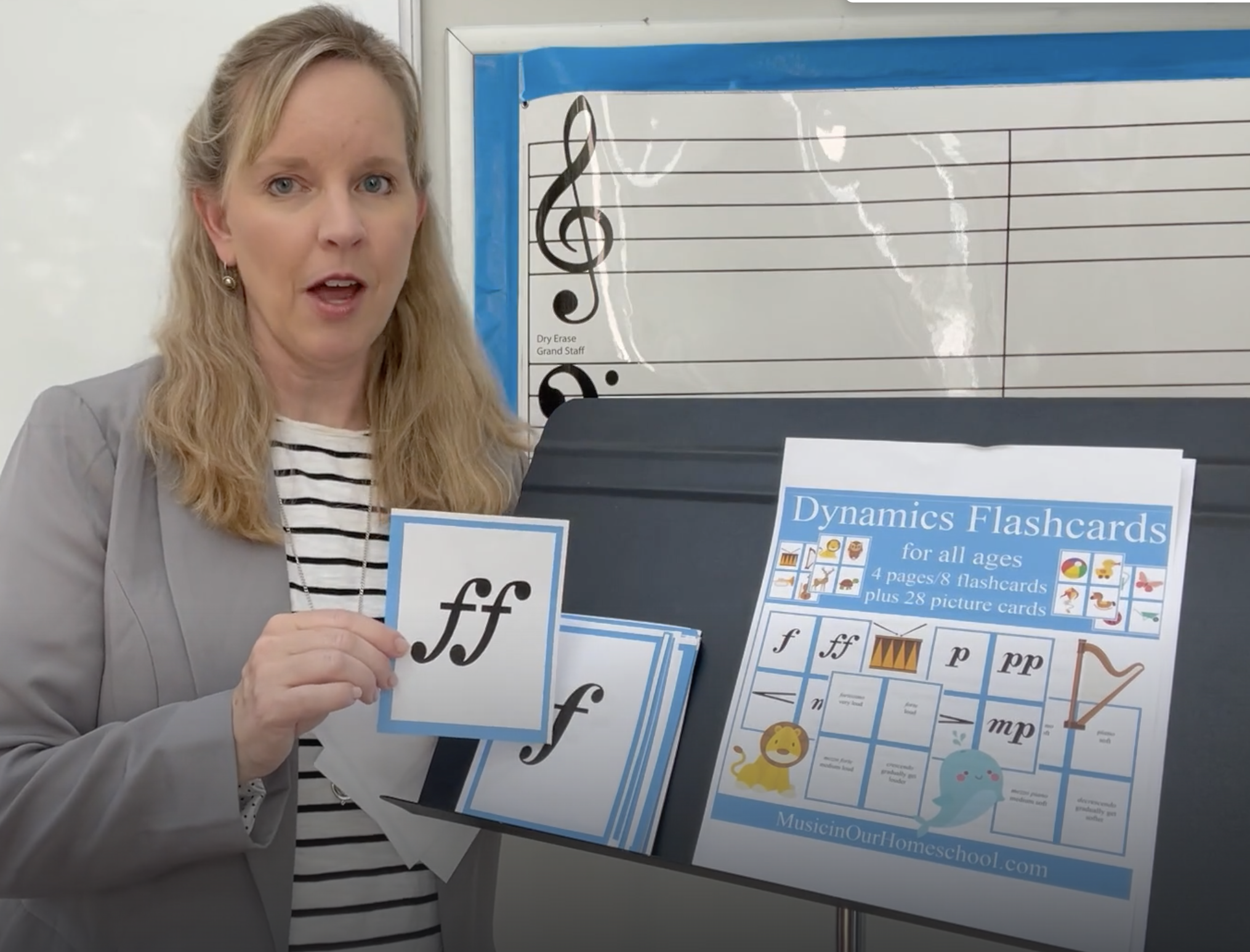
Benefits of Using Flashcards and Picture Cards to Teach Dynamics
There are many benefits to using flashcards and picture cards to teach dynamics. Here are a few:
- They are visual and hands-on. Visual and hands-on learning activities are especially effective for young children. Flashcards and picture cards provide a visual representation of dynamics that can help children to understand and remember them more easily.
- They are fun and engaging. Children are more likely to learn and retain information when they are having fun. Flashcards and picture cards can be used to create a variety of fun and engaging activities and games that will help children learn about dynamics.
- They are affordable and easy to use. Flashcards and picture cards are relatively inexpensive and easy to find. They can also be made at home with simple materials.
Tips for Teaching Dynamics Conclusion
Flashcards and picture cards are a great way to teach dynamics to homeschool students. They are visual, hands-on, fun, and engaging. Homeschool moms can use them to create a variety of activities and games that will help their children learn and master dynamics.
See the YouTube Video “Tips for Teaching Dynamics to Kids” here:
Listen to the Podcast Episode here:
Listen here or subscribe and follow The Music in Our Homeschool Podcast through your favorite podcast app!
